Story: Outta Range on the Old Ghost Road - Presented by Bosch Pt. 1
Whilst on a road trip in the South Island, we thought we’d head over to tackle the iconic Old Ghost Road. But we decided we’d try and ride it a little differently – instead of staying a few nights in a hut, we’d try and nail the trail in one day on eMTB’s – should be easy right?! Cameron Mackenzie (our handy photographer) would be using a loan Trek Rail eMTB and I’d be on a new Cannondale Moterra eMTB, which was under review.
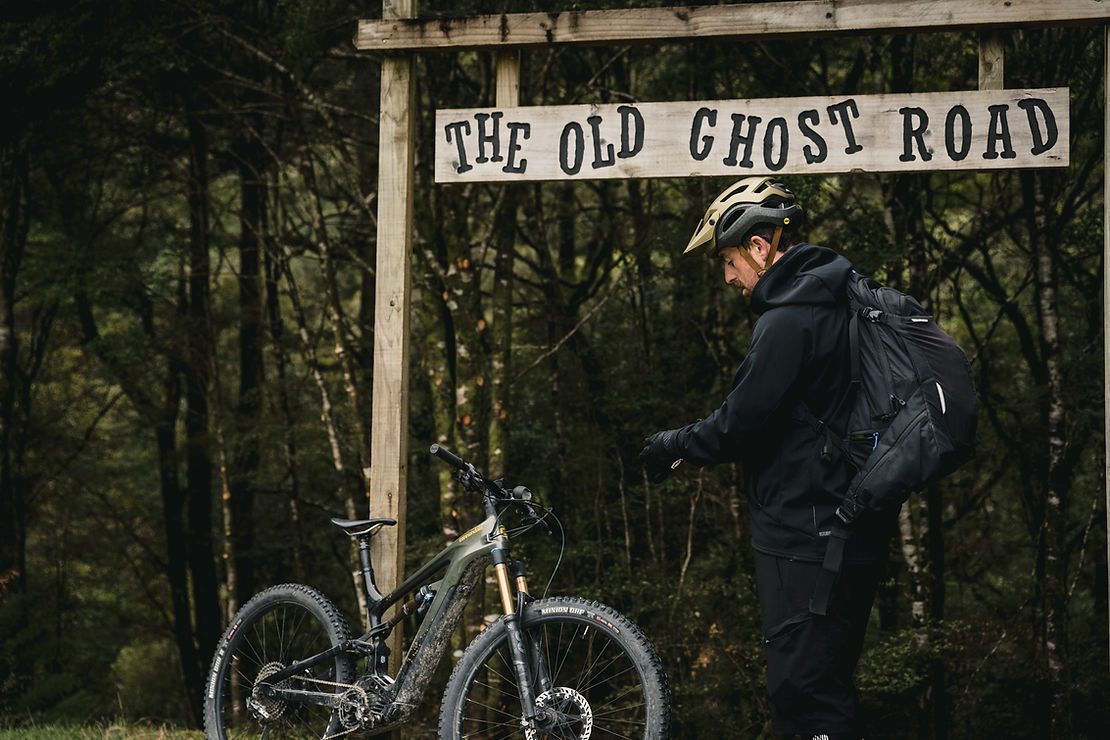
With the launch of the new Bosch Performance CX motor, Cannondale completely redesigned the Moterra for 2020, to accommodate the new system. The pedalling position on the Cannondale Moterra 1 is central, upright and very comfortable. The slack seat tube angle positions the rider far over the rear wheel on steep climbs, unweighting the front tyre and sagging into the rear travel. However, the front wheel remains on the ground the moment you shift your weight forward slightly, though it isn’t very precise in tight turns. Thanks to the traction offered by the rear wheel and the excellent eMTB mode of the Bosch motor, the Cannondale Moterra 1 makes easy work of steep climbs. Going downhill, you feel like you’re sitting in the Cannondale Moterra 1 rather than on top of it. The Moterra 1 instils you with confidence on the descents, which is only amplified by the MAGURA MT7 brakes. The Moterra 1 handles with predictable precision. Once you’ve decided where you want to go, it will hold its line no matter how imperfect your posture or riding technique. The FOX suspension absorbs all the bumps, though it could offer the rider a little more feedback from the trail. More playful riders will want a little more support from the suspension, to pop off roots and ledges, but above all the Moterra 1 feels stable.
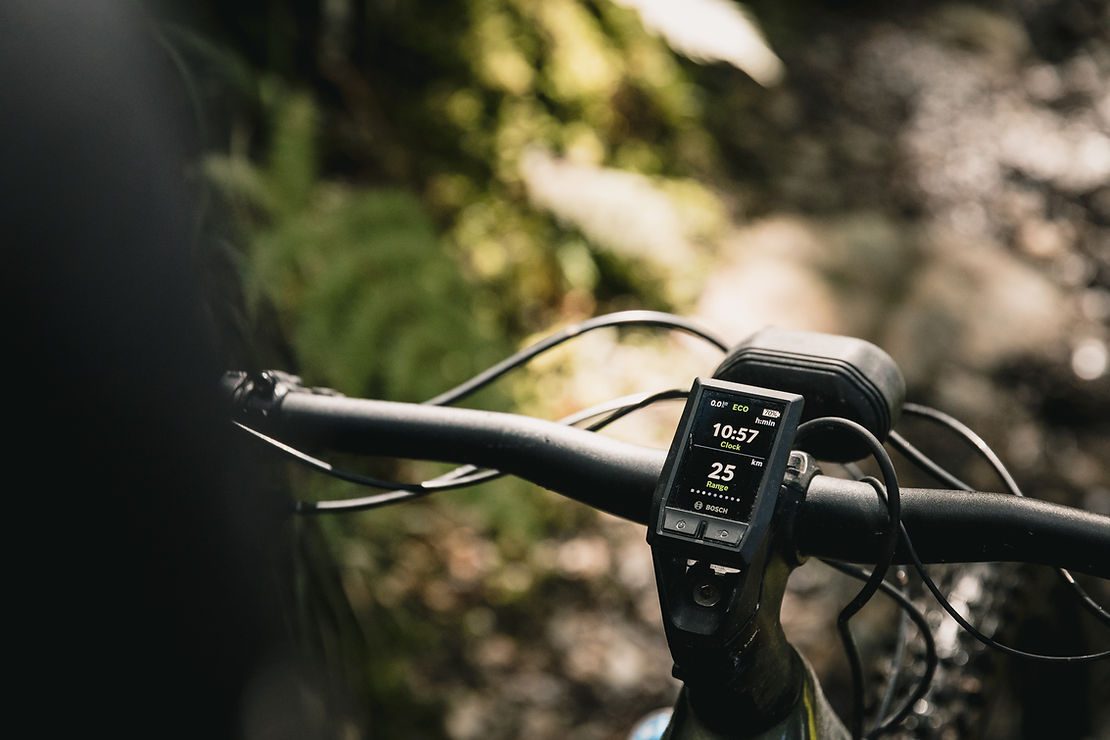
Our base was the West Coast coal-mining settlement of Seddonville, 50km north of Westport, named in honour of the legendary Liberal Premier, Richard Seddon. It was also the site of an early experiment in state socialism – New Zealand’s first state-owned coal mine opened there in 1903. Seddonville is in the isolated north of the West Coast in the foothills of the Glasgow Range, on the southern bank of the Mokihinui River. Seddonville isn’t the easiest place to get to, as with most of the West Coast of the South Island. The coast is isolated for a reason and that’s the gem of the region - it’s almost stuck in time or at least it feels that way when you’re there.
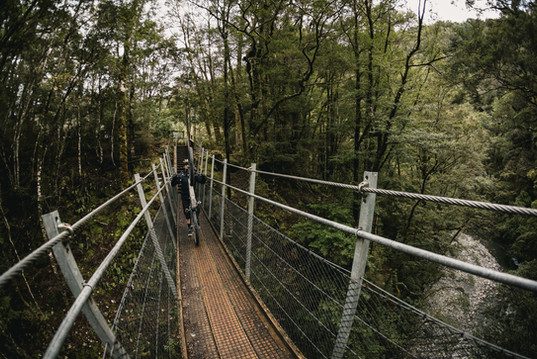
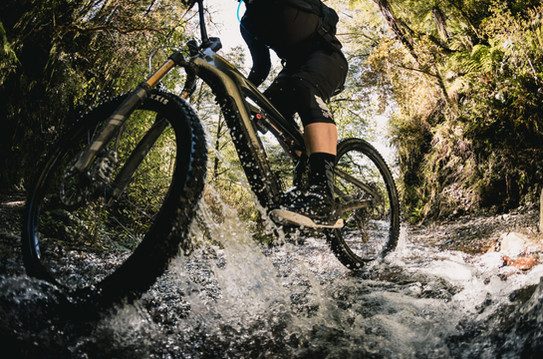
Words: Liam Friary
Images: Cameron Mackenzie
Story: Destination Marlborough Pt. 2 - Presented by Pirelli
To read the full story, subscribe here to NZ Mountain Biker.
To read part 1, click here.
The boat ride the next morning was back to Torea Bay, to complete the track with what looked like an easy sort of effort, only about 19 kilometres.
We knew the day would start with a grunt. The combined tarmac and trail ascent gets riders to 407m, in about 2.5 kilometres. You can peer almost straight down on the jetty where you started. That sort of caper continues for quite a way, and it makes things tough. All that effort was rewarded with a spectacular view from the day’s second high point, and a very exciting switchback descent.
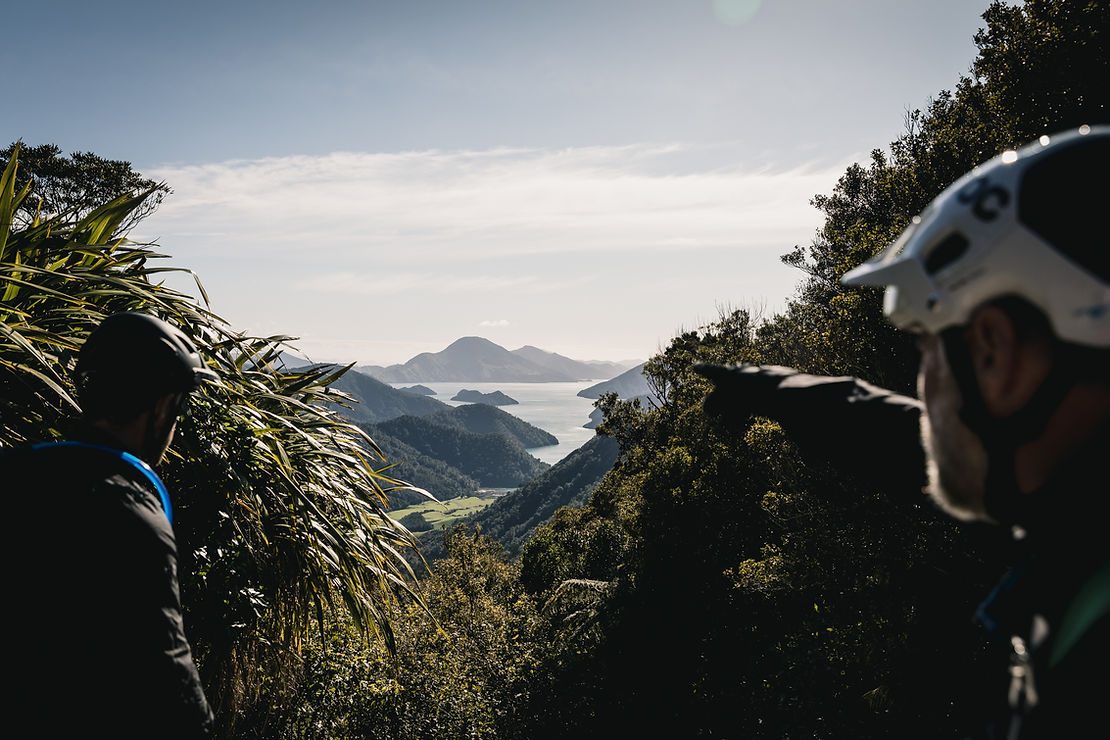
The relatively mellow ride from there to Anakiwa was made more interesting by the clock, we were running late; and by the e-Bike, which for the second day had run low on power. Where the first day’s battery outage was softened by a mostly downhill finish, the run to Anakiwa was rolling trail with plenty of ups. We rode it at the best pace we could muster, and got to a slightly miffed ferry pilot about 20 minutes behind schedule, then had to wait for the unfortunate e-Biker, who sprinted down the jetty five minutes later.
A long discussion over beers at the Oxley ensued – how to recommend the Queen Charlotte to bike riders? Moving on to the excellent (if slightly rustic) Jolly Roger café, the discussion continued at dinner. We reckoned all of it would pay back reasonably fit and able mountain bikers in spades – every section has something to put a smile on your dial.
The gem is definitely Ship Cove to Camp Bay, and that’s the part that is closed to bikes during summer: December 1 to the end of February. The rest of the trail would be fairly brutal on a hot summer day, and you would miss the best part during the height of summer. We reckoned a shoulder season foray would be best.
The last day of our Marlborough adventure was to be an assault on Nydia Bay. This trail has been talked about for decades, and even raced in the NZ Enduro. How I had managed to miss out on it until now is a mystery, but my time had finally come.
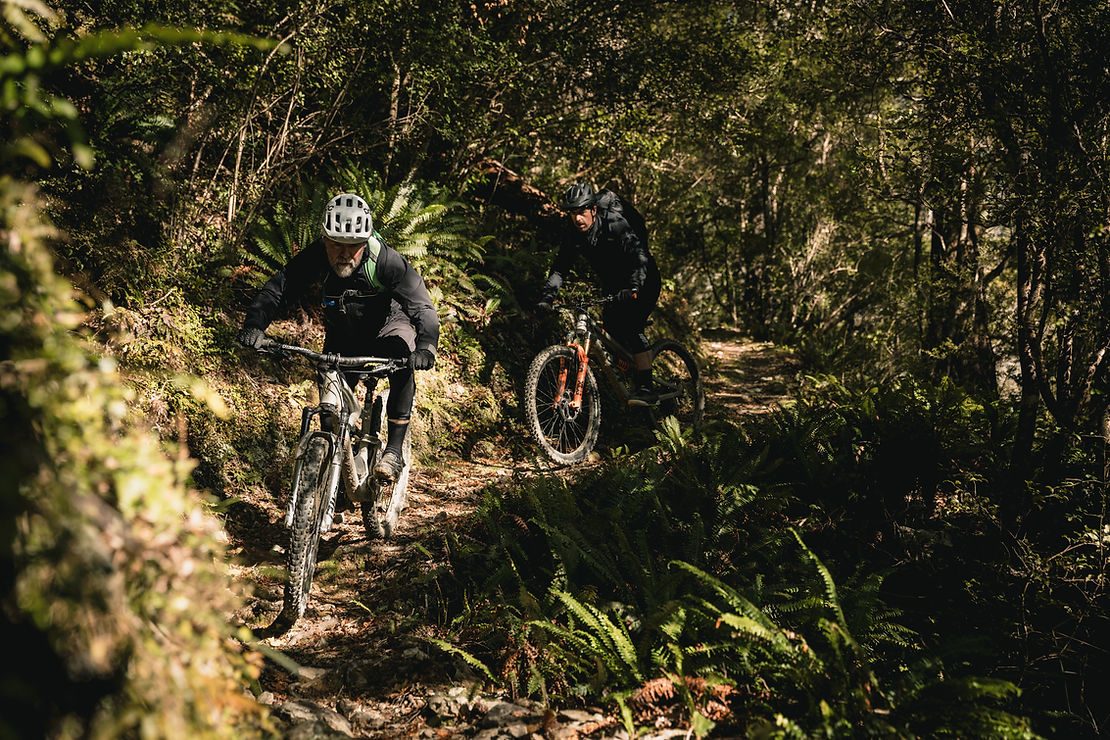
The drive to Havelock behind us, we met up with the very helpful Kelly, from Destination Marlborough, who would drop us at the trailhead then drive around to Kaiuma Bay to retrieve us. That is an aspect of the Nydia Bay ride that needs to be factored in, if you want to take in the entire 27 kilometres in a single serve.
We decided to add in the Opouri Bridle Track, so Kelly delivered us to the Opouri Saddle and we dropped straight into some of the best trail you will find, anywhere. Benched into steep terrain, the Bridle Track drops over 530m in about five kilometres, so it is nearly all downhill but never very steep.
The trail is all rideable, but not by me. The consequences of failing on some sections would not be good, and we were on a day-long mission we wanted to complete intact. Having said that, on the Bridle Track there were only a few spots that needed a quick dab or a dismount, and most of it was ridiculous fun.
The arrival at Duncan Bay, where the road ends, is an anti-climax: the trail pops out directly onto the road, which meanders along the shoreline to a jetty, and the start of the Nydia Bay Track proper.
The trail climbs gently, hugging the coast and offering up views of the water all the way. There were a few root snaggles along the way, but pretty soon the trail tipped upwards and the real fun started.

The Nydia Bay Track is a nicely benched trail on a very climbable grade – but every so often it presents a very interesting challenge. It might be a tangle of roots snaking across the line, and the next little heart-stopper might be a rocky outcrop that has resisted the trail builder. So you tripod over it, or dismount and walk a few paces. Intermittent watercourses traverse the trail, some are dry and can be crashed through, some are running with clear water, are steep sided, and slippery as eels.
From the ridge to the sea at Nydia Bay must be about as much fun as you can have on a mountain bike, as long as you watch where you are going.
It is possible to ride most of the ‘maybe’ bits with the momentum of going downhill on your side, and cackling to yourself while you clatter down a tricky but rideable section unscathed is a rare pleasure. Except when it isn’t rideable. Those bits come along without warning, see above about watching where you are going. Cam would go ahead to scope out photography opportunities, and sometimes station himself so he could catch us as we came along. I saw his head and shoulders over the crown of the trail ahead, and looked at him for a poofteenth of a second too long. Just enough time for my front wheel to drop off the trail, which I got a close look at a split second later. It was a funny crash, no harm done, made funnier by the fact that Cam hadn’t stopped for a photo op, he had also upended himself.
We dropped in to Nydia Bay at the same time as the rain that was forecast, and we were glad to have completed the descent in relatively dry conditions. Pristine forest gave way to scrappy pine forest, with every piece of machinery that has ever come in by boat, then worn out, still laying around. Simple little houses were dotted among the trees, and the trail became muddy and almost swampy in spots.
At Nydia Bay Lodge we pulled off the track to have a look and a bite of lunch. The Lodge managers were in residence, although the Lodge was a month or so from opening for summer. They were keen for a chat, and brewed us a coffee which was a welcome treat. We sat on the veranda and watched the rain, chewing over the day so far, as well as our sandwiches. We reckoned anybody who relished riding a difficult trail would love Nydia Bay track, but anybody at all would enjoy walking in for a stay at the lodge, and the walk back out out again the same way.
An out-and-back bike ride would also be a goer, with a bit more hike-a-bike on the return trip, but an easier descent to finish, and no need for a shuttle.
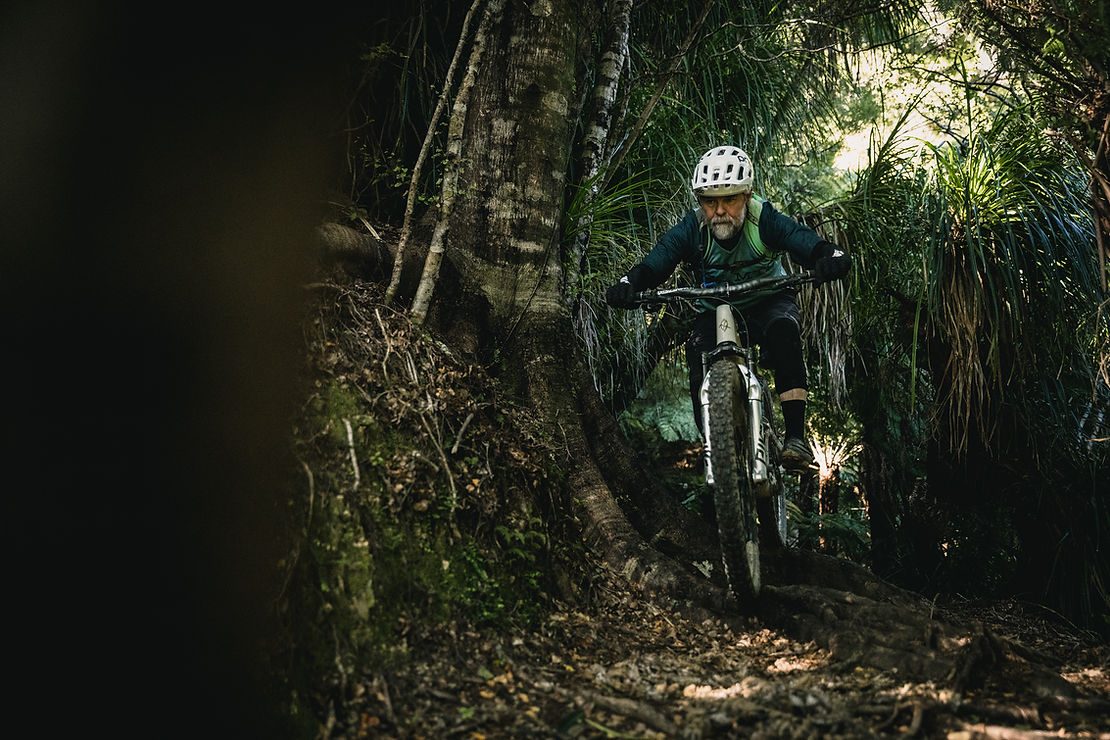
For us though, we were heading up another climb, now in a howling gale and sideways rain. The climb through farmland and up to Kaiuma Saddle is actually higher than Nydia by a few metres, but it’s a lot less difficult. So is the descent – it is not easy, but it’s not as gnarly as Nydia, even in the rain. That weird transition from native forest to plantation pine always amazes. The trail surface changed from weather beaten rock and tree roots to cushioned orange pine needles, and we dropped the final few kilometres into a valley and across a stream before a last fairly brutal climb.
The last downhill was wide open, an easy run down to the Kaiuma Bay road and Kelly in a waiting car, complete with a change of clothes and warm dry interior. Havelock put on hors d’oeuvres at the Mussel Pot - another excellent dinner at the Captain’s Daughter, and the bike trip was done.
We were all pretty pasted by this time. Over 100kms of unfamiliar trails, saving the toughest for last, and a solid 4000m of climbing, made for three long but incredibly rewarding days.
Marlborough had turned on a varied and top quality selection of mountain biking, and Picton had become a new favourite New Zealand town. The top of the south has a heap more trails to offer, and we were all thinking about the next visit before we had even departed.
Words: Gary Sullivan
Images: Cameron Mackenzie
Release: Santa Cruz Bullit eBike
Santa Cruz Bullit MX could be the world’s burliest trail e-bike. Imagine the gnar-taming capabilities of the big-hitting Nomad and Megatower boosted with Shimano’s new EP8 STEPS motor and you start to see a bike that’s not only off-the-charts capability wise, but in terms of how far and wide you can go with it as well.
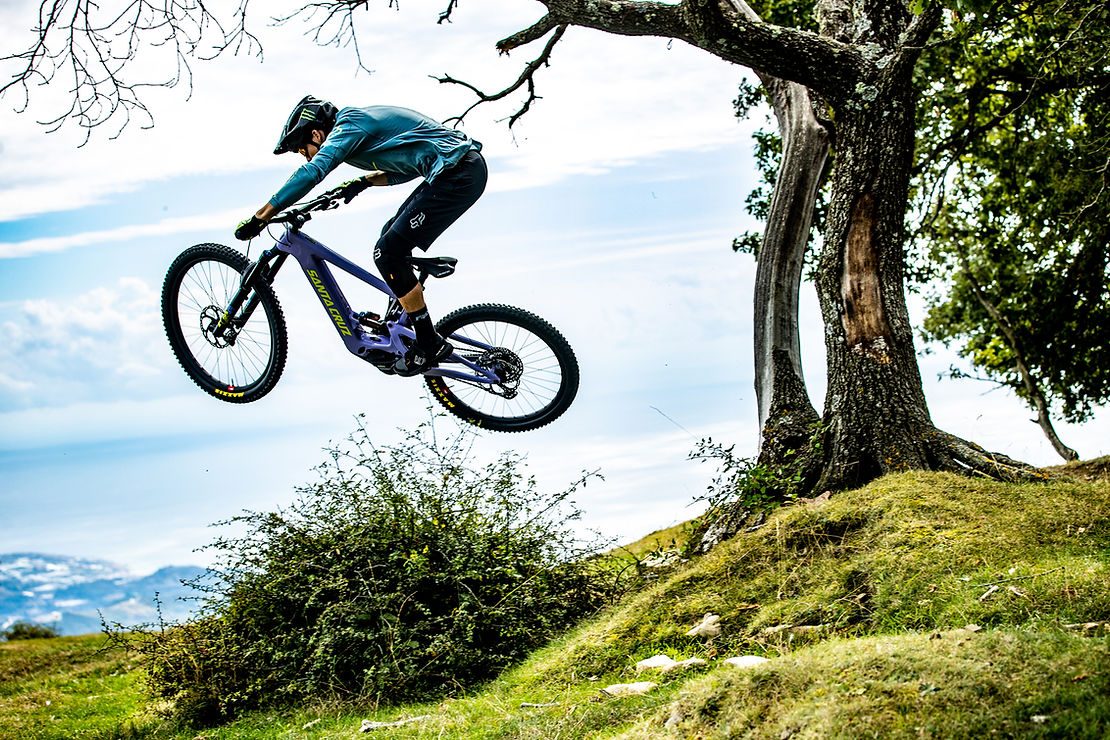
With a high-capacity 630wh battery, the more refined, more powerful—not to mention lighter and smaller—EP8 motor combined with a smasher build, Bullit turns those once-a-year epics into your regular rides, and lets you unlock new long rides you never thought possible.
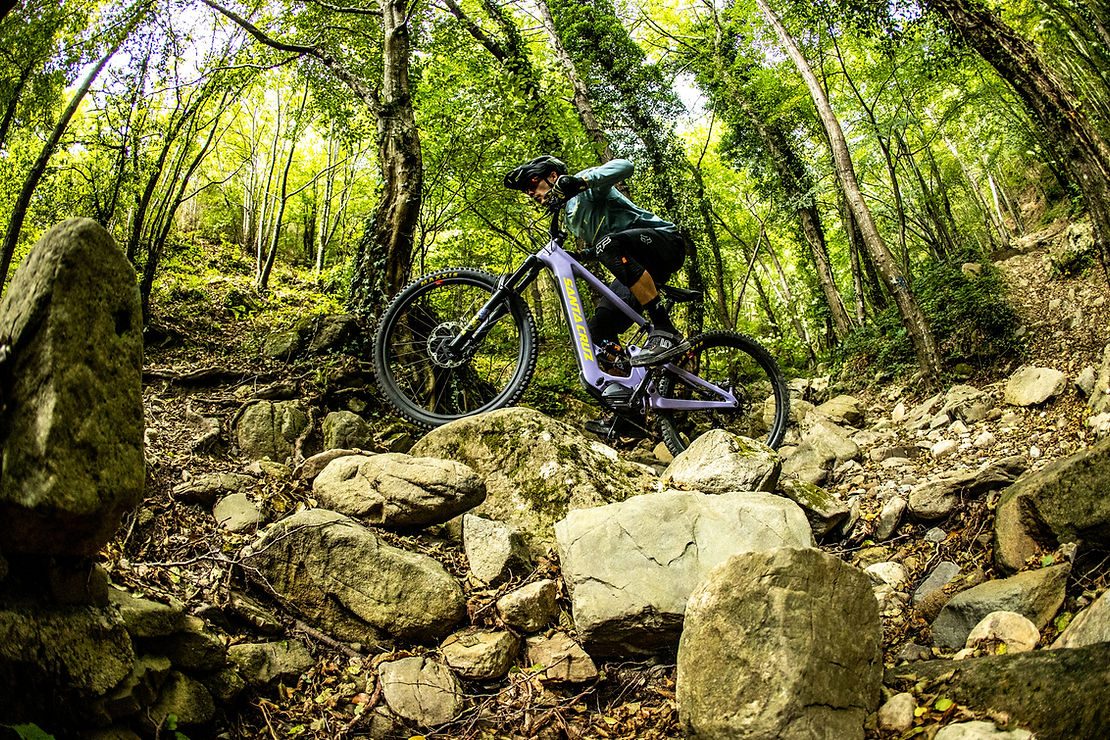
Designed for tackling the steepest and deepest of trails, Bullit’s build - 170mm-travel fork with 38mm stanchions, DoubleDown tires, coil shock options—begs for the abuse of rooty, rocky, horror fests usually reserved for the aforementioned big hitting pedal bikes. Where the Heckler puts a premium on agility and playful handling, the Bullit comes to brawl with a no-limits attitude.
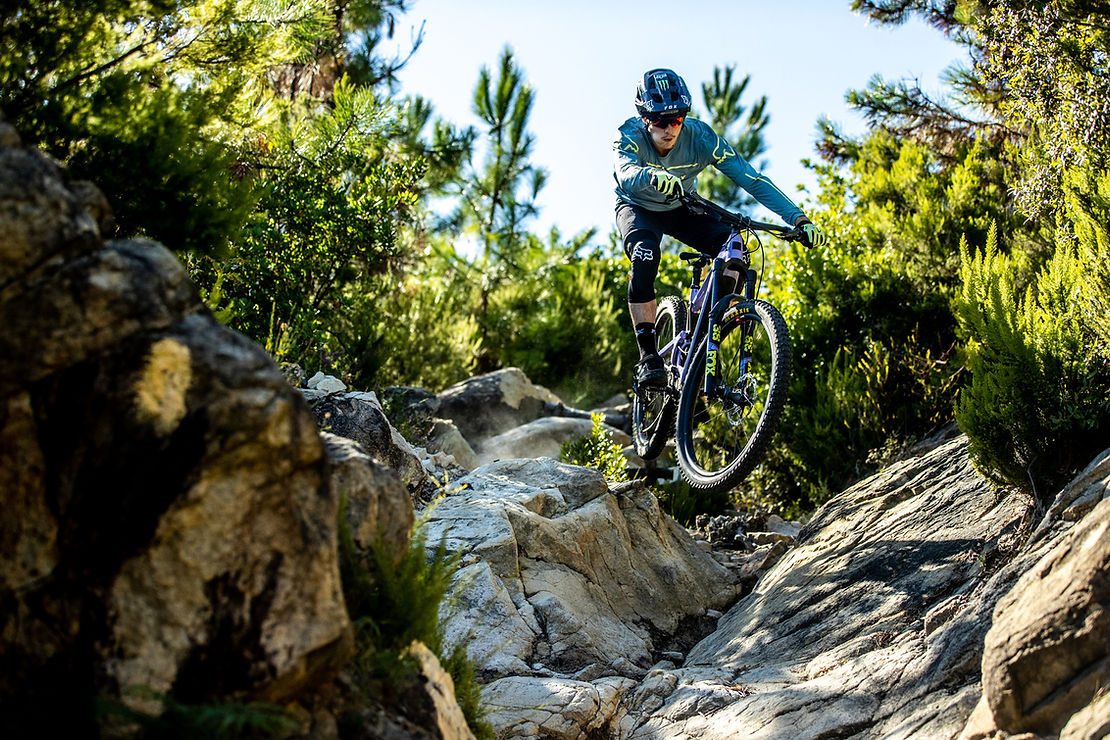
Like many of our bikes, the inspiration for this one initially came from the Syndicate - our works-level DH squad. After champion puzzler and downhill demon Loris Vergier talked us into a mixed wheel V10 DH sled, it was really just a matter of time before we brought that World Cup mindset to a broader use case. And like with Loris’ race bike, we’ve found it provides the confidence-at-speed of a 29er with the more spritely handling characteristics and manoeuvrability of a 27.5 rear end. Unlike Loris’ V10, however, this big hitting mixed bike goes uphill as well.
Build Series: Ibis Mojo x SRAM AXS Pt. 3
This is a review of the bike, so I will not rant on about this set-up, except to say that once I got used to it I stopped thinking about it. I didn’t change anything except the seat height - the frame size was large, so I am lucky my shorter-than-average legs were able to reach the drivetrain with the seat post at its lowest position. In fact, it was the perfect height, and the extra length provided by the bigger frame size meant my longer-than-average torso felt about right on it. The tall head tube put the bars at a higher relative position than what I am used to, and that took a short while to get used to.
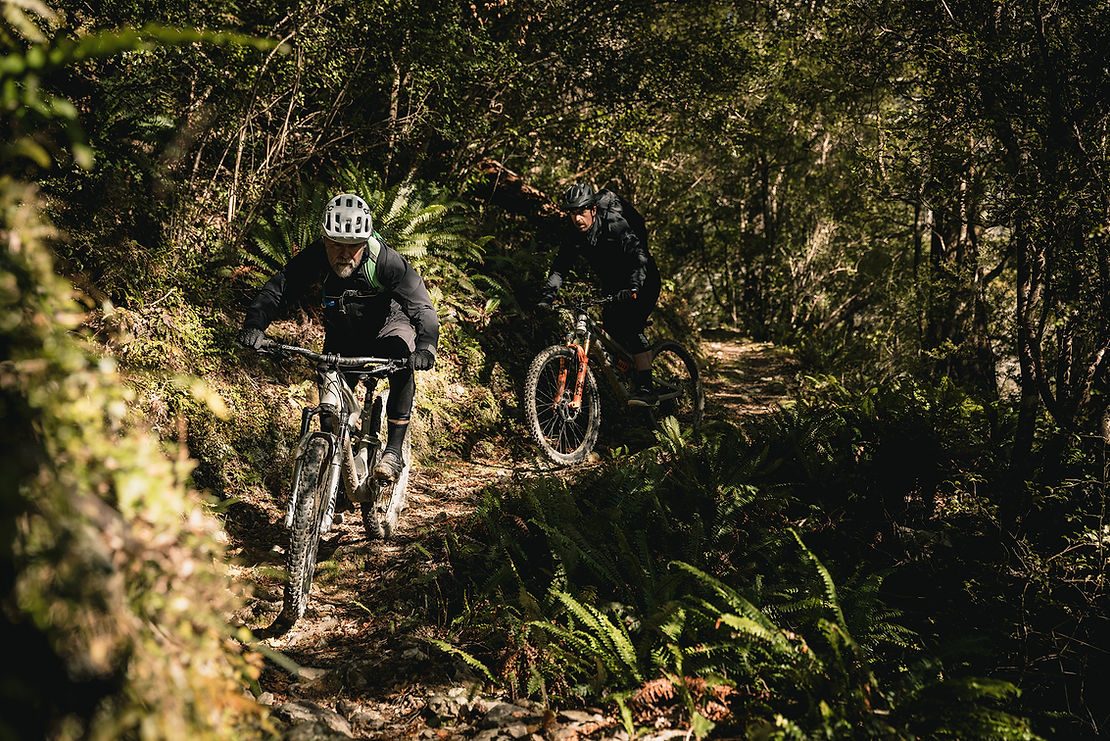
By halfway up the first climb, I felt right at home. The climbs we tackled later in the day were much worse - long sections of both our Queen Charlotte days ran right along the top of a ridge, and some sections were stupidly steep. The Ibis ate this stuff up. When I got off and walked the bike it wasn’t because the bike was not up to the task.
The bike has a 76.6-degree seat tube, which puts the rider in a good position over the bike for climbing - scooch forward on the saddle and the front end will stay planted until you run out of gears (or willpower). Heading back down towards sea level, the bike immediately felt very comfortable. The head angle of 65.4 degrees keeps everything calm and predictable. The DW-Link rear end works with what Ibis call ‘Traction Tuned Suspension’. The best way I can describe the ride is floating, like a hovercraft. It felt bottomless, and definitely as though there was more to the travel than 130mm.
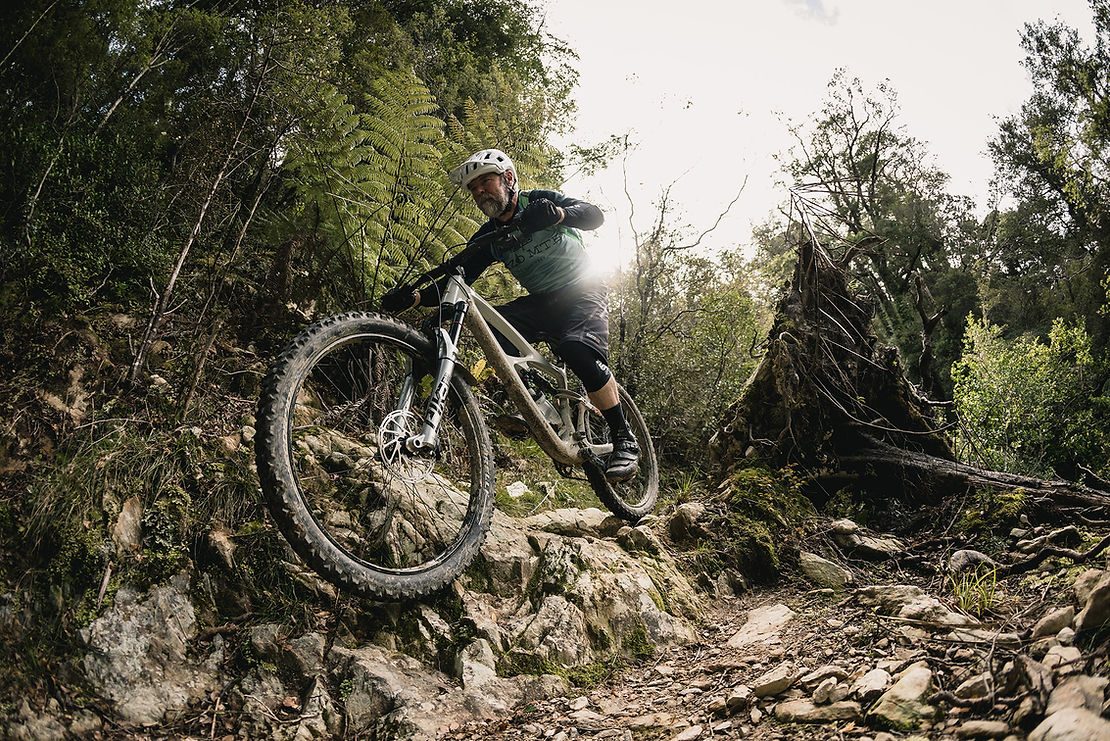
One aspect of the bike that I thought about before saddling up was the wheel size - I had done three years on a 29er, and the conventional wisdom states that the bigger wheels roll over stuff better, provide more traction and allow more wiggle room in uncharted territory, which is where we were going. I need not have worried - in practice there was nowhere the wheel size felt like a liability, and the slightly smaller hoops may have been more playful, whatever that means. The three days of the test period covered an amazing variety of terrain and trail surfaces, and some of it was downright dangerous. By the time we were on the really challenging stuff, I had complete faith in the Mojo and it never let me down. I aimed it where I wanted to go, and that is where it went.
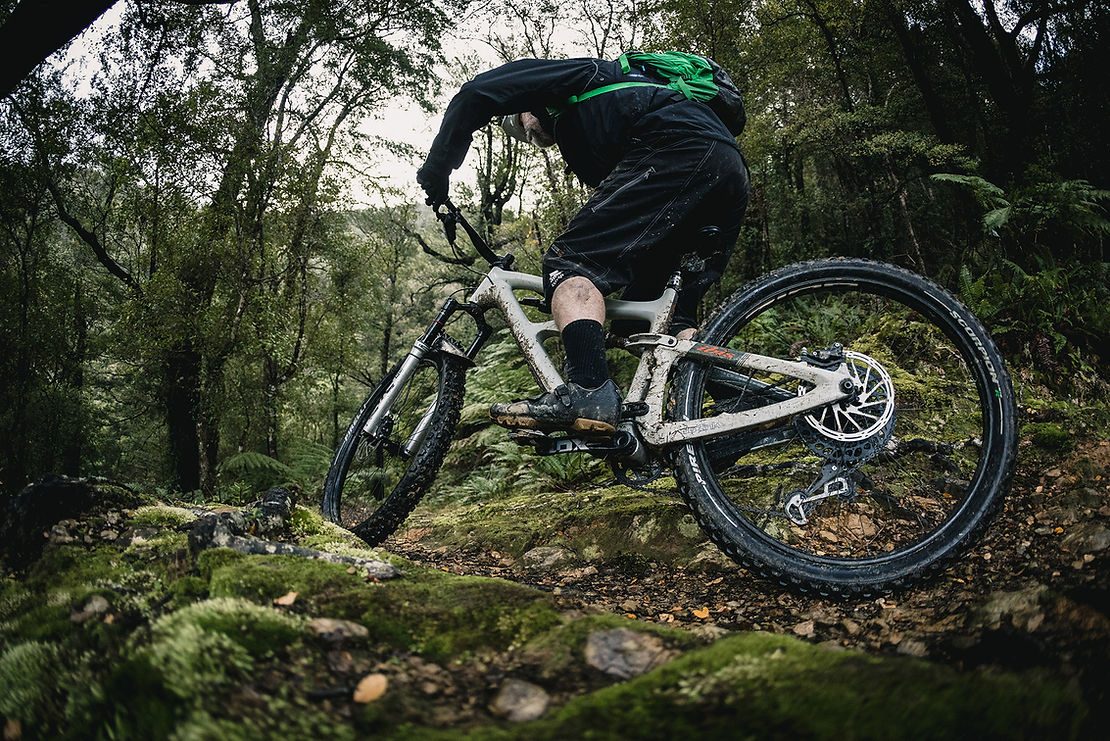
Rider: Liam Friary – I might be the publisher of this here magazine, but I don’t get aboard too many test mountain bikes. My interest was piqued when the Ibis Mojo 4 was touted. I liked that the bike was short travel, 27.5” wheel size (which is what’s on my current bike) and that it screamed playfulness.
I ventured down to Rotorua straight after our trip down south. The extensive trail network would be an ideal testing ground for the Mojo. Immediately, I could feel the bike’s superb pedalling efficiency. I meandered onto some single track climbs and the rig simply ate up anything in its way. The ease of manoeuvrability was also noted. The power I was generating went straight to the pedals - this was helped by the 76.6 seat angle, which put me in a powerful position. I was impressed! But was more impressed about staying on the bike throughout uphill technical sections, which I sometimes struggle with. The rig just ploughed through and kept me moving forward. On the ups, most of the time, I’d leave the FOX DPS rear shock in ‘Trail’ mode and didn’t even think to switch it over to ‘climb’ mode – which pays tribute to the bike’s incredible climbing capability. Especially the V5 DW-link – the thing doesn’t bob. It’s just so damn efficient!
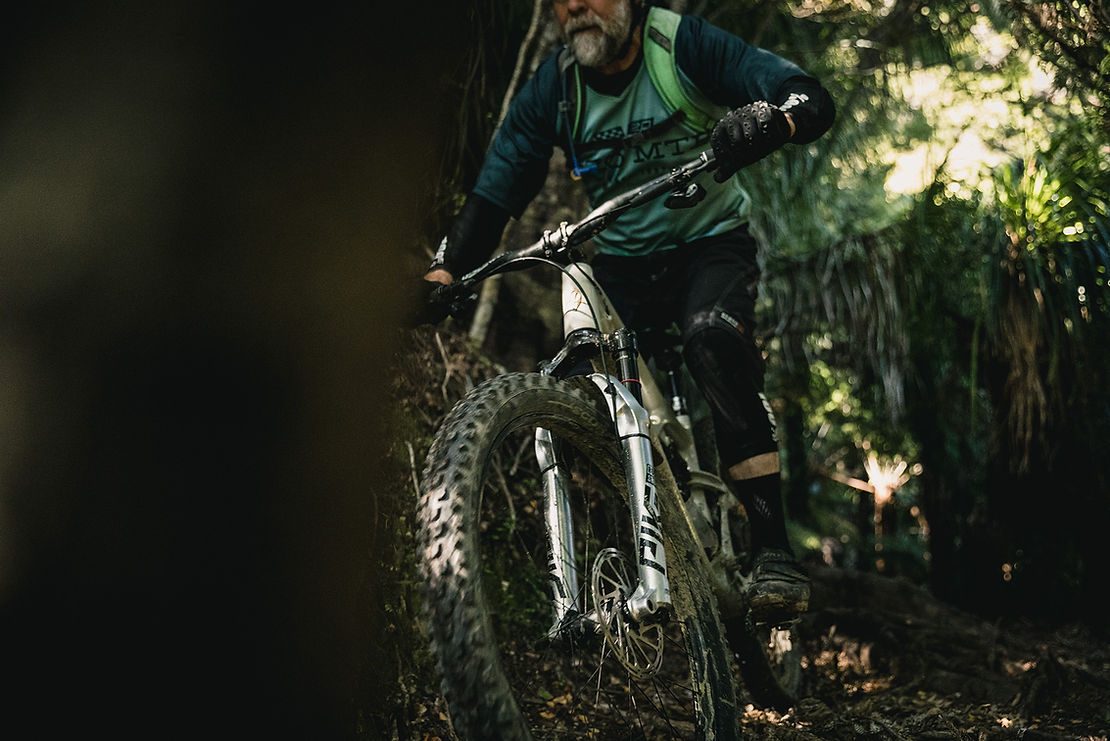
On the downs, the rig’s ability came into its own. It sucks up anything with ease and lets you add flair on the trail without making you pay for it. Again, on the super technical trails, I sometimes struggle but this rig ate em’ all up and kept me upright. I was fooled into thinking I was a better rider than I actually am. The bike’s capability far exceeds the 130mm travel that it has. It’s predictable at speed, stable, and keeps you on course – point it where you want it to go, and it will go! The short chainstays got me in and outta’ turns super quickly – it feels snappy. It’s lively, light, nimble and offers a ton of confidence with its superb traction. It sticks you to the ground and ramps up quickly, avoiding harsh bottoming out. I for one have been super impressed with this bike and, after the awesome time spent riding it in Rotorua, won’t be giving it back anytime soon.
Words: Gary Sullivan & Liam Friary
Images: Cameron Mackenzie
Release: Santa Cruz Heckler EP8 & MX
"The Heckler is about expanding your own trail map – accessing previously unreachable trails, unlocking less-used trails and doing so independently.The full carbon frame and interchangeable 504wh battery keeps the weight down (45.3lb) compared to bikes with larger batteries but it’s fast and easy to put in a fresh battery for even bigger, longer days.
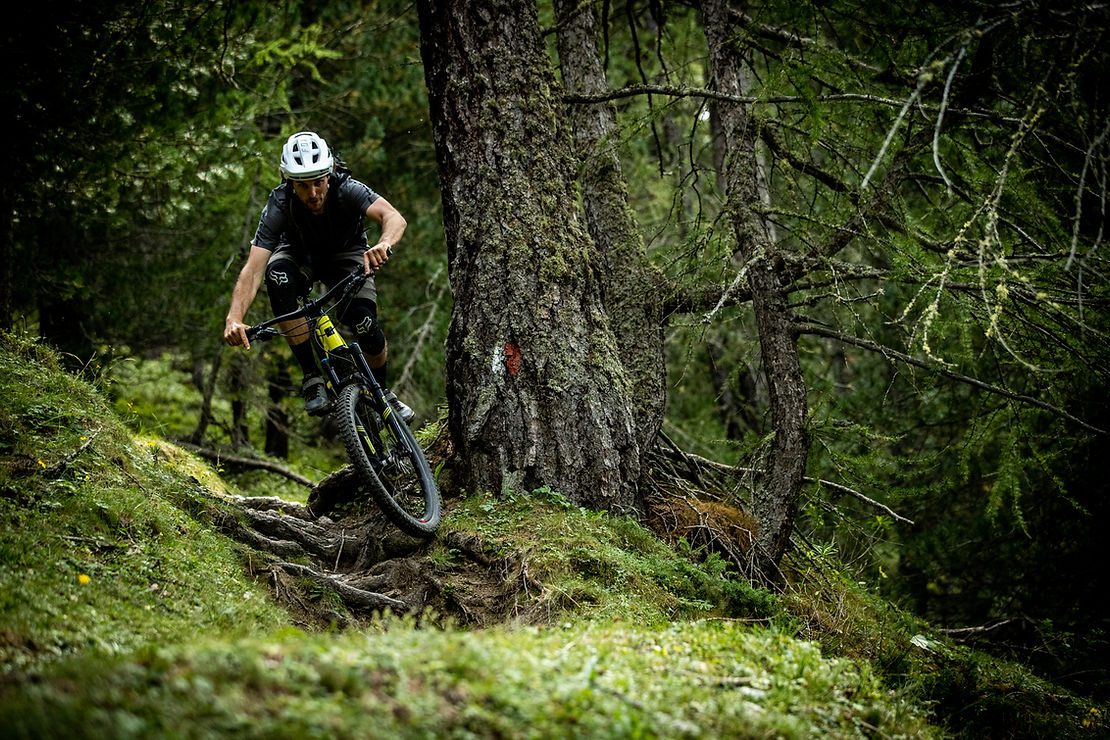
The new Shimano EP8 motor is lighter than the previous unit (310g), has more power (85Nm versus 70Nm), smaller volume (-10%) for greater ground clearance, less drag (36%), more heat resistant, and tuned to give more power in Trail mode. All this means it’s even more capable of tackling longer, tougher rides.
The 27.5-inch wheels keep the bike playful and maneuverable in order to make the most of the trail. The slack headangle (65.5-degree) and 445mm chainstay length provide a snappy and fun feel while still providing traction for when the trail gets steep and technical, both up and down.
Like all Santa Cruz bikes, the Heckler pedals well regardless of watts involved. The 160mm-travel fork is paired with 150mm-travel at the rear to provide a wide range of capabilities. We tweaked the VPP kinematics to have slightly lower anti-squat than other bikes. This adds a touch more support and traction over rough stuff when pedalling seated - a major advantage of having the pedal-assist on your side.
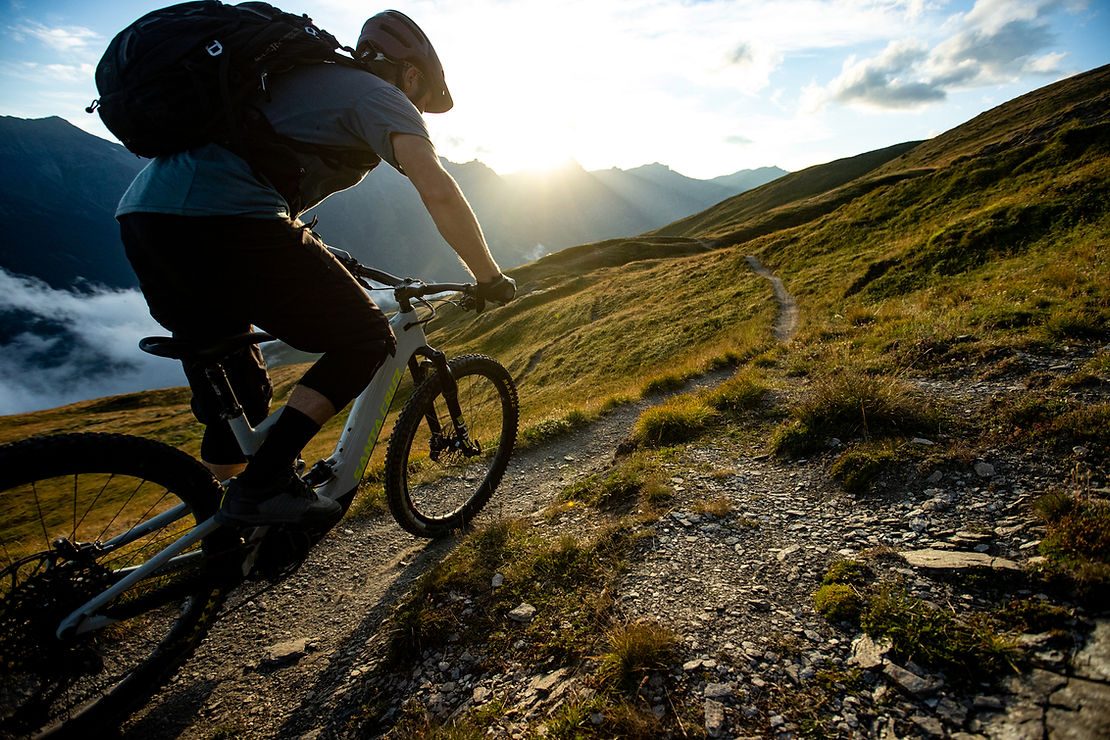
And like every Santa Cruz bike, the Heckler is built for the rigors of true mountain biking. Shimano electronics were chosen for their refinement and reliability, while quality pivot hardware, easily replaceable radial bearings and no-nonsense internal cabling were considered with a mechanics sanity in mind!
The Heckler’s boundaries aren’t defined by distance, laps, or time. The boundaries in our head that say, “Don’t bother”, “Turn back”, “Impossible.” Smashing these boundaries is what got us hooked on riding in the first place. Heckler’s not about taking things easy, it’s about making things possible.
Heckler MX
Our bikes have always been about amplifying fun. So our goal for the Heckler MX was to make something light and agile that can help you on-site blind terrain. A mixed-wheel bike gives the confidence of a 29-inch wheel up front for traction and roll-over when you’re caught off guard by technical features. The 27.5 rear wheel allowed us to keep the moderate chainstay length of the Heckler (445mm), which provides a snappy and easy-to-handle bike on tight, demanding trails. We did this without compromising on the standard Heckler’s geometry, so the bike’s character is still very light and accurate.
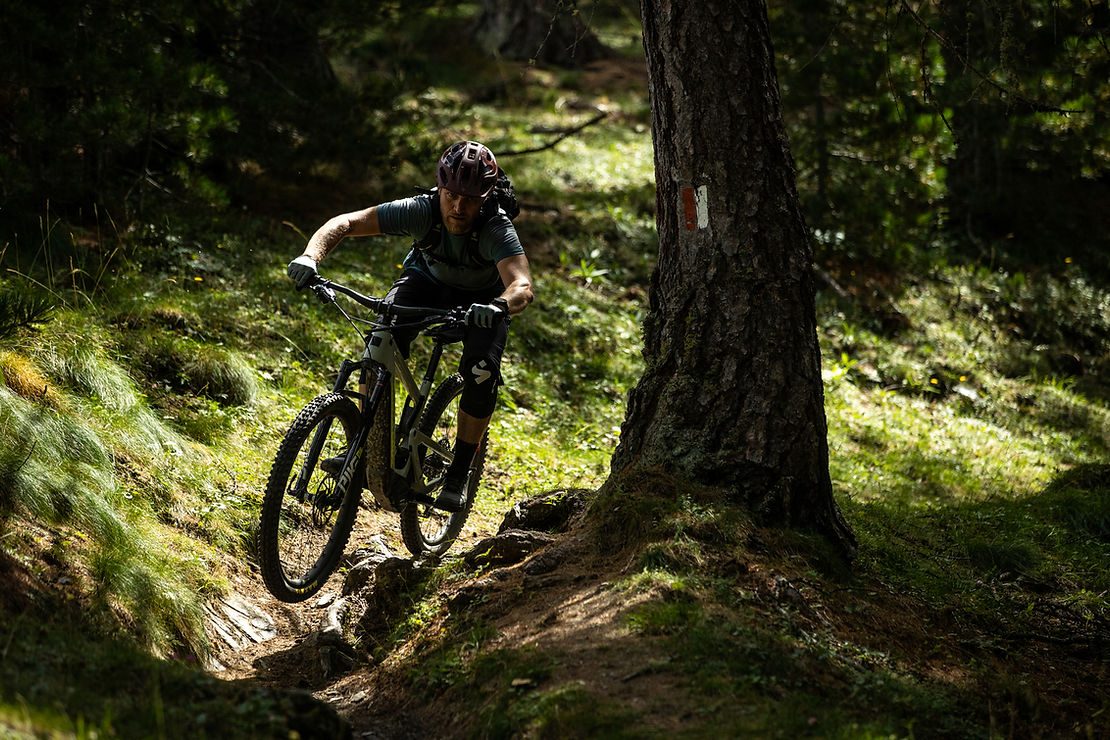
The Heckler is about expanding your own trail map - accessing previously unreachable trails, unlocking less-used trails and doing so independently. Whether tackling rides that are guarded by monstrous climbs, cramming more into less time, it’s about rarer rides becoming the norm for you. The interchangeable 500wh battery keeps the weight down compared to bikes with larger batteries but it’s fast and easy to put in a fresh battery for even bigger, longer days.
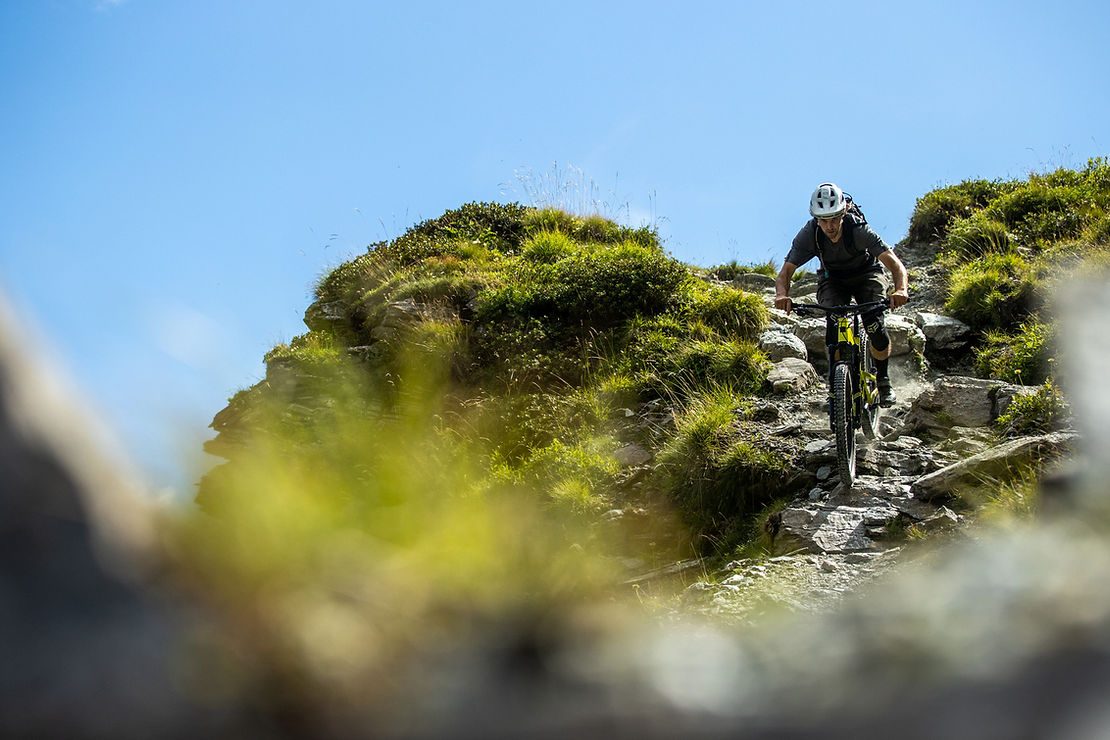
The new Shimano EP8 motor is lighter than E8000 drive unit (380g), has more power (85Nm versus 70Nm), smaller volume (-10%) for greater ground clearance, less drag (50%), more heat resistant, and tuned to give more power in Trail mode. All this means it’s even more capable of tackling longer, tougher rides. We use the full Shimano STEPS battery and motor system again because it means assured reliability and global aftermarket service."
Story: Destination Marlborough Pt. 1 - Presented by Pirelli
To read the full story, subscribe here to NZ Mountain Biker.
Picton is a town most people like passing through. As the ferry terminal for the South Island, travel in either direction involves Picton. If you’re a lucky Northerner arriving in the South Island, it’s a sort of welcome sign that flashes past as soon as you hit the road out. You might spend a couple of hours there on the way back, but if you’re anything like us you will be exhausted and in a kind of funk about having to head back to normality.
Located at the head of Queen Charlotte Sound, the town is small enough to feel crowded into the water by the surrounding bush, but large enough to support a great variety of accommodation, transport, and eating options.
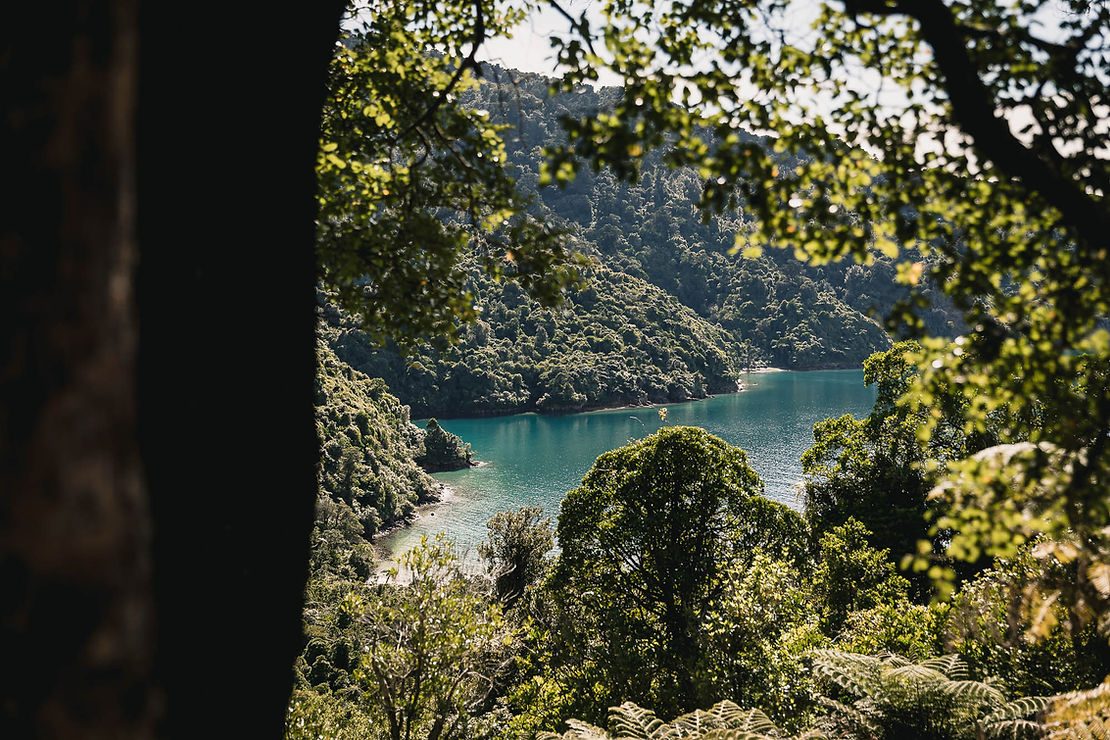
Picton is the traditional hopping-off point for the Queen Charlotte Track. Scratched out of the tough terrain in the early 80s, based on sections of historic trails, the track was opened to walkers in 1983. Keeping a track that is 71 kilometres long in operational condition was beyond the capabilities of the determined people that instigated it, but with the formation of the Department of Conservation in 1987 - and a big effort involving people from DoC and the Air Force - the track was cleared and improved and has been a favourite ever since.
Open to bikes except for a section that closes over the height of summer, the Queen Charlotte was a shoo-in to the National Cycleway project. Unlike many trails developed since, Queen Charlotte was not built for bikes, and that is what makes it so unique as a bike ride.
You travel to the northern start point by boat (it’s the only way to get there), a scenic jaunt from Picton that takes about an hour. You step off the boat in the solitude and spectacle of Ship Cove / Meretoto, the hills ringing with birdsong.
Many people choose to use the other unique feature of Queen Charlotte – a fine selection of accommodation literally en route. Riders can have their gear ferried to many stops along the trail and make the ride last two or three days with no need to be weighed down by baggage. We’d done that on a previous expedition and it was a really good way to do it. Another special feature is that anybody who doesn’t want to ride a section, or in fact any of the trail at all, can go by boat, and be located in a deckchair with a wine and a book by the time the riders come along.
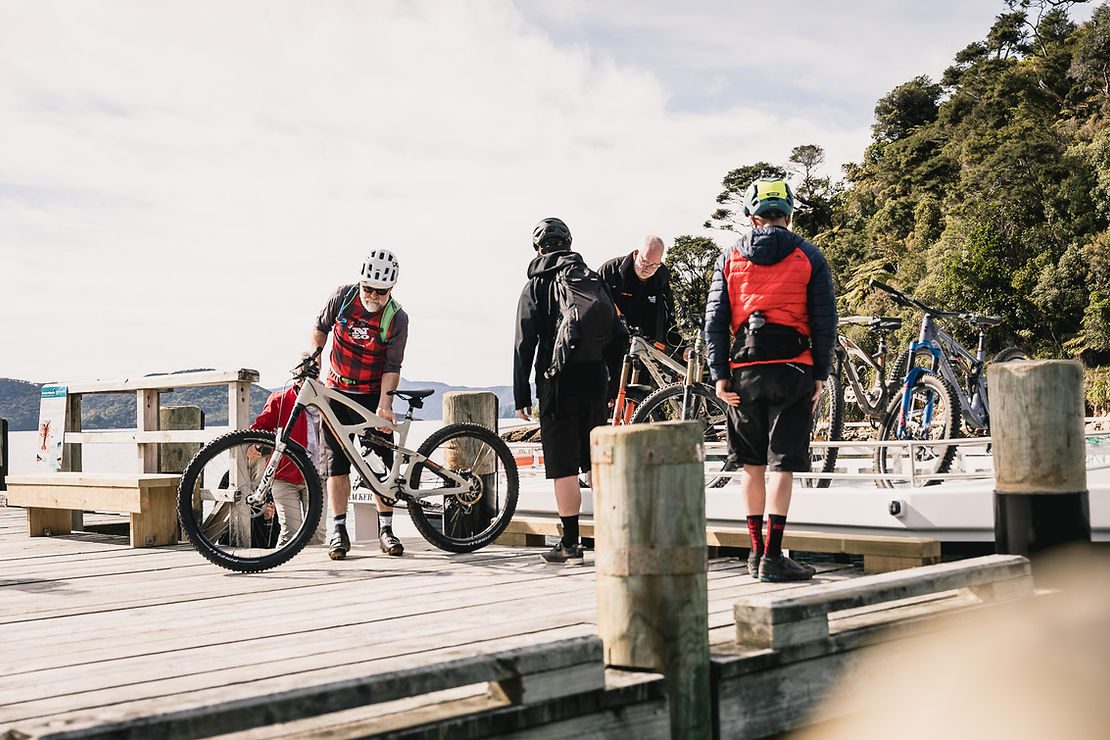
On this outing, we took a different tack, and based ourselves at the Yacht Club for the duration. There are solid arguments in favour of either approach, but the upside of a fixed base is the opportunity to let your kit explode across a room and only have to round it all up again once. As we had two days to do Queen Charlotte, and a third day to ride the legendary Nydia Bay Track, the fixed base won out. The bonus was a couple of extra boat rides, and spectacular dinners in Picton.
Our first day was pegged to be a 51km effort from Ship Cove to Torea Bay. We had breakfast in the hotel, then did the freewheel to the waiting ferry. The boat had a very nice roof-rack with space enough for heaps of bikes, ours as well as some bikes belonging to friends we had along for surprise company – Kylie and Matty were out for a day ride before heading further south. There was space for several more.
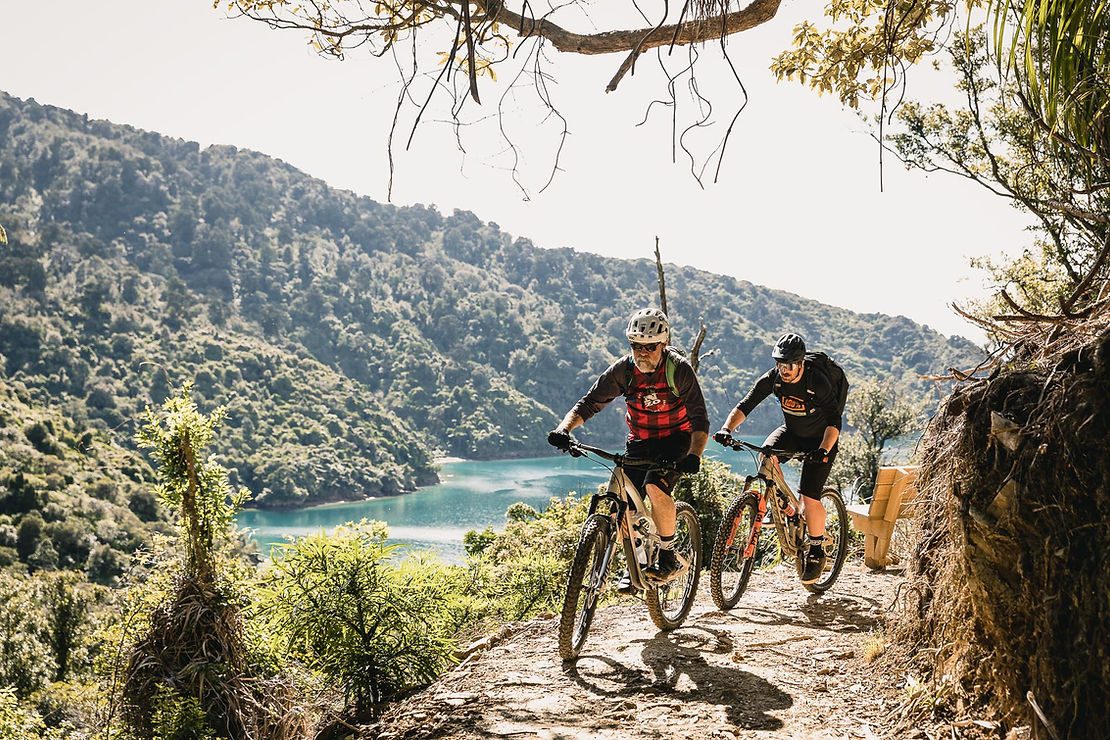
The start of Queen Charlotte Track at Ship Cove is stunning. There is ancient forest, clear water under the jetty, and on this day, a certain trepidation on my part about the first part of the route. On our previous mission, the first climb was very hard. It went straight up, and was almost impossible to ride. To my relief, the track has had some major upgrades, and the new line is a textbook example of how to get to a pretty decent height without too much pain.
The trail switchbacks its way up through the forest before the climb topping out at 237m with a long view toward the rest of the ride. Diving off the saddle there is a really nice section of very fast, wide open trail down almost to sea level in a couple of kilometres, before the climb to the next saddle gets underway. The trail is classic back-country mountain biking.
The Sounds is an amazing place to be – every piece of land seems impossibly steep, and the shore is so convoluted that the Sounds contain 20% of New Zealand’s total coastline. Every high point presents another aspect of that complex geography.
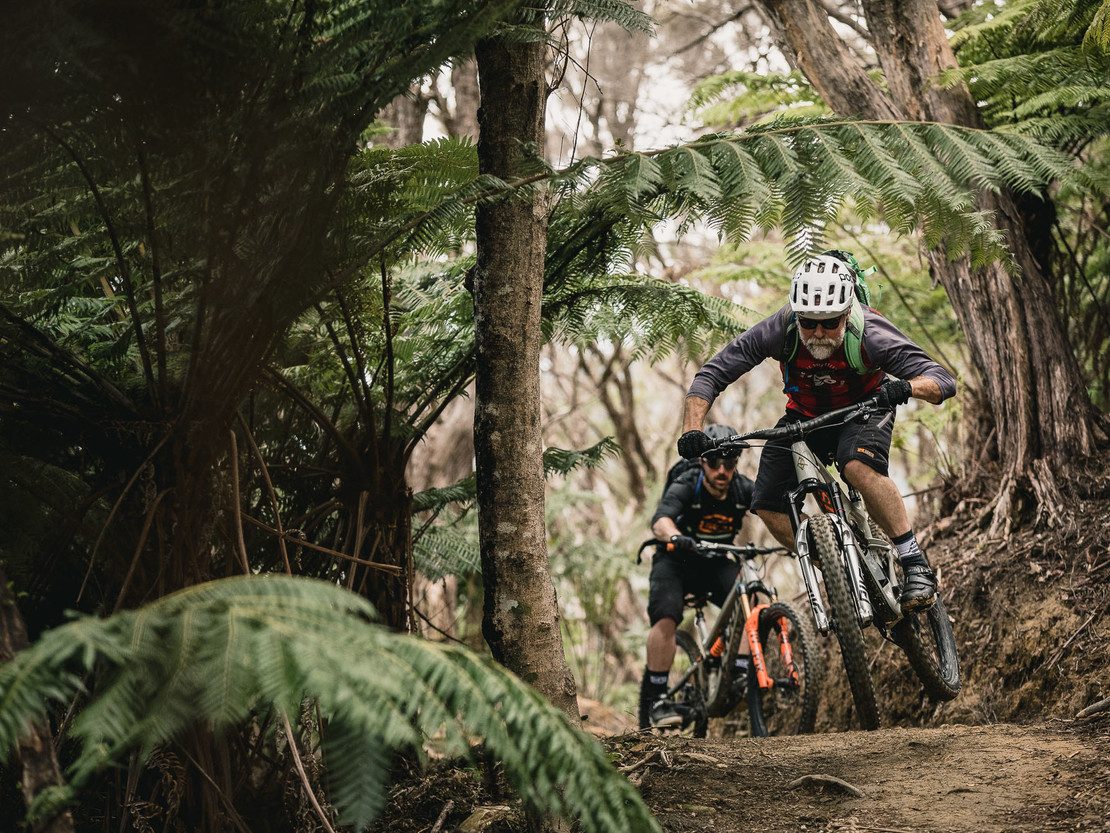
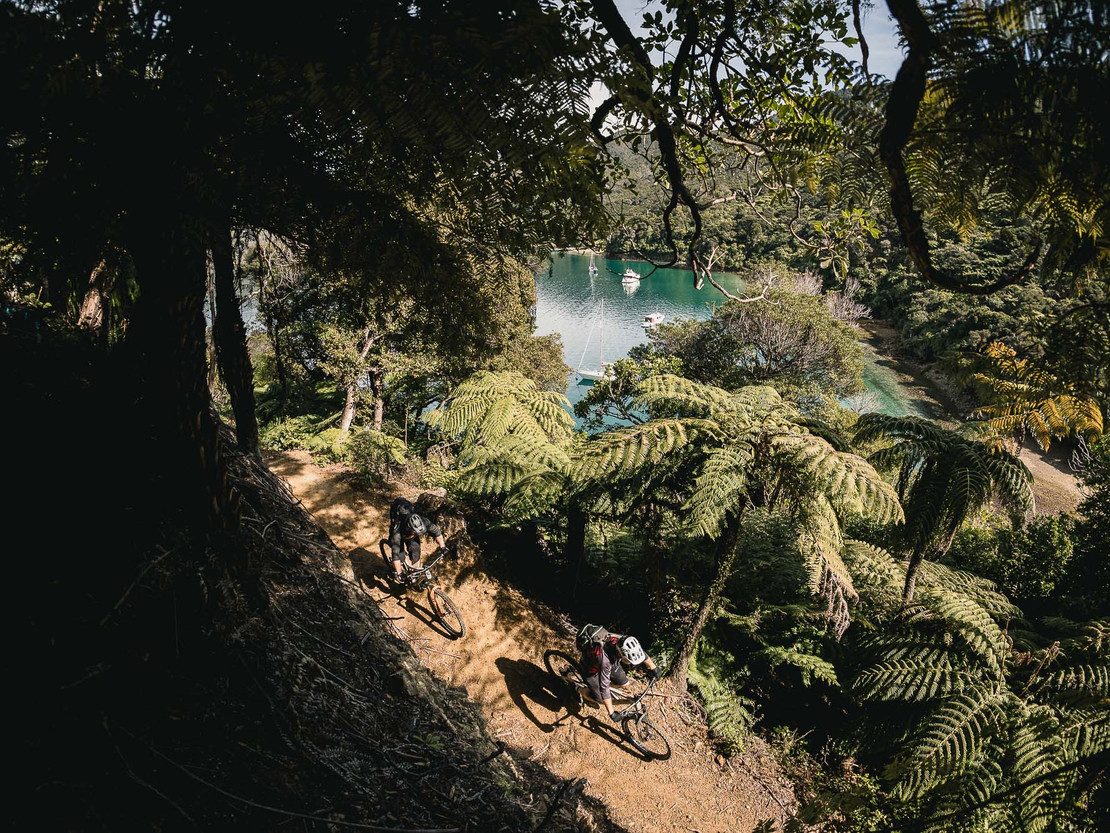

It is after the climb to Kenepuru Saddle that the trail starts to be a grind. Following the ridge gives many opportunities to look out across the Sounds, but it also results in some very steep climbs. Still, among the relentless, almost unrideable ascents, were some neat little sections of downhill. The final descent to Torea Bay, and the surreal experience of rolling on to a jetty where a ferry waited, was a fitting end to the day’s ride.
Words: Gary Sullivan
Images: Cameron Mackenzie
Release: Specialized 2FO Roost Shoes
"At Specialized we’ve spent a lot of time in the saddle and on our feet considering ways to make better cycling shoes. The key is listening to what our own bodies and team riders want in order to develop equipment that meets everyone’s needs. Trail riders want function, comfort, and style. With the Roost, we’re giving riders a shoe that outperforms the competition on the trail, while keeping riders looking good and feeling fresh on and off the bike. Roost for every occasion.
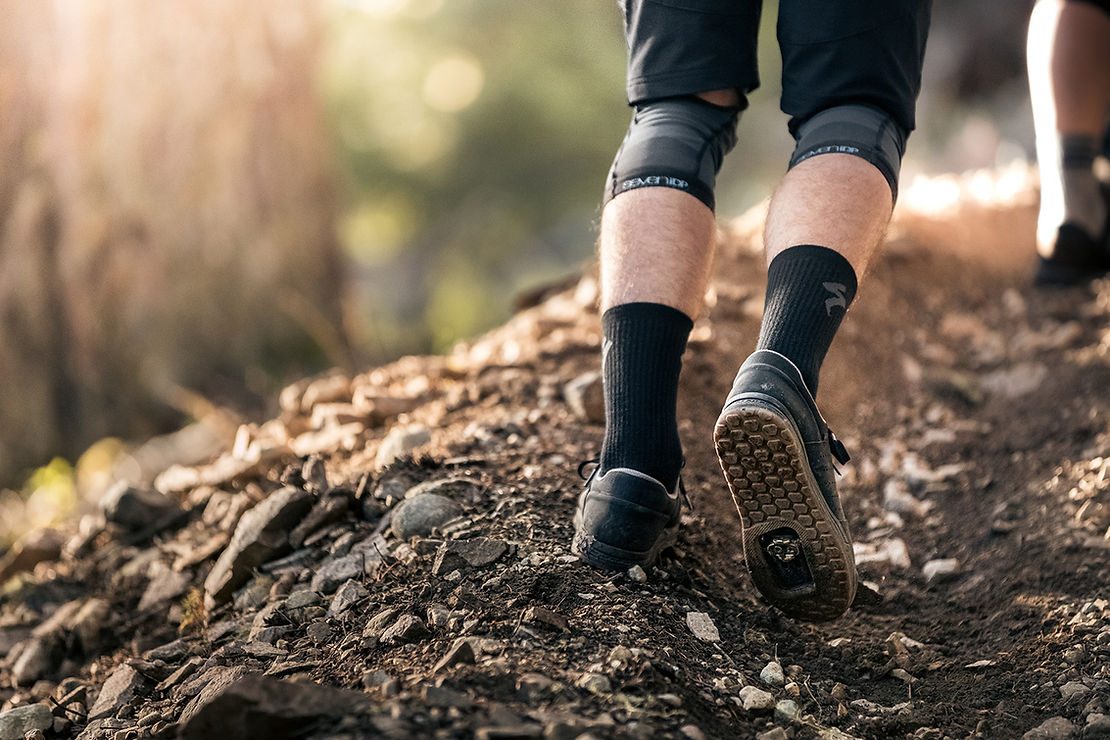
We think of rubber as being bouncy, but bouncy is not what you want in a flat pedal shoe. You want a rubber sole that grips the pins of the pedals without feeling squishy, which gives you confidence that your feet are going to stay put on the pedals. That leaves less to worry about and more to shred about.
The 2FO Roost features our newly developed 3rd generation SlipNot rubber sole designed to stick to and hug pedal pins. Giving riders a sticky, bounceless feel while ripping through rough braking bumps and across trail chunder...chunder? At least that’s what our test riders keep saying.
The clipless version of the 2FO Roost keeps the next generation SlipNot outsole and adds a roomy cleat pocket making it easier to engage your pedals in even the roughest trail situations.
Both models are stiff enough to give you the support needed for a long day out on the bike while remaining flexible enough to make those unexpected hike-a-bike sections or an afternoon shooting the breeze at the local shop completely comfortable. Leave that second set of shoes at home. With the 2FO Roost, you’ll be perfectly dressed for any occasion.
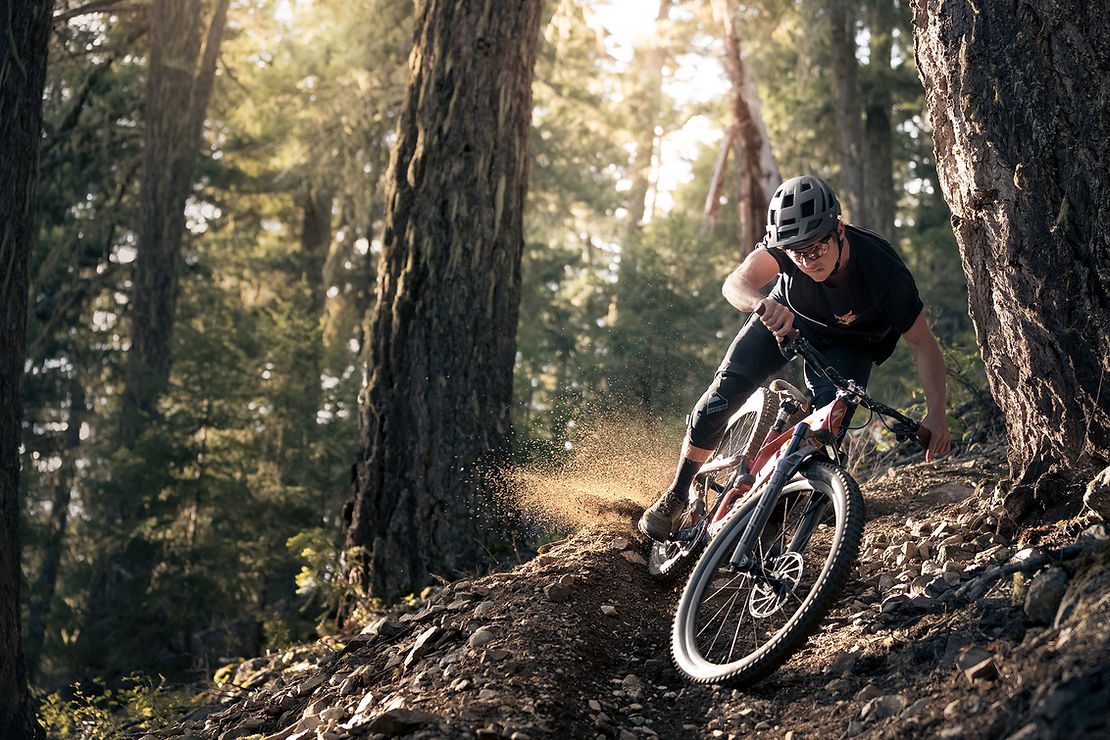
We wanted to keep the Roost as light as possible, so we did away with the traditional foam padding in the upper and replaced it with Xpel™ Airmesh. A lighter, more breathable material, Xpel™ Airmesh retains all the impact reduction properties of traditional padding but with reduced weight a significant increase in drying speed. Because no one wants to ride in wet shoes. And that’s a fact.
How did we take all this science and put it into a shoe that looks this good? A shoe that looks at home in your favorite happy hour spot and while sending your dream line? Designer magic.
But I think we can pull some things out of the hat:
Suede hits and caps are added to the upper in high wear areas for increased longevity and decreased scuff abrasion.
We designed a clean, low-rise silhouette to create a shoe that looks as good on the bike as it does at the brew pub.
It's all mixed together with some sensibly subtle colors and minimal branding, so no matter where the trail end’s you can stick to it and Roost."
Build Series: Ibis Mojo x SRAM AXS Pt. 2
To read Pt. 1 in this series, click here.
When it comes to wrenching on bikes, it doesn’t get much better than this.
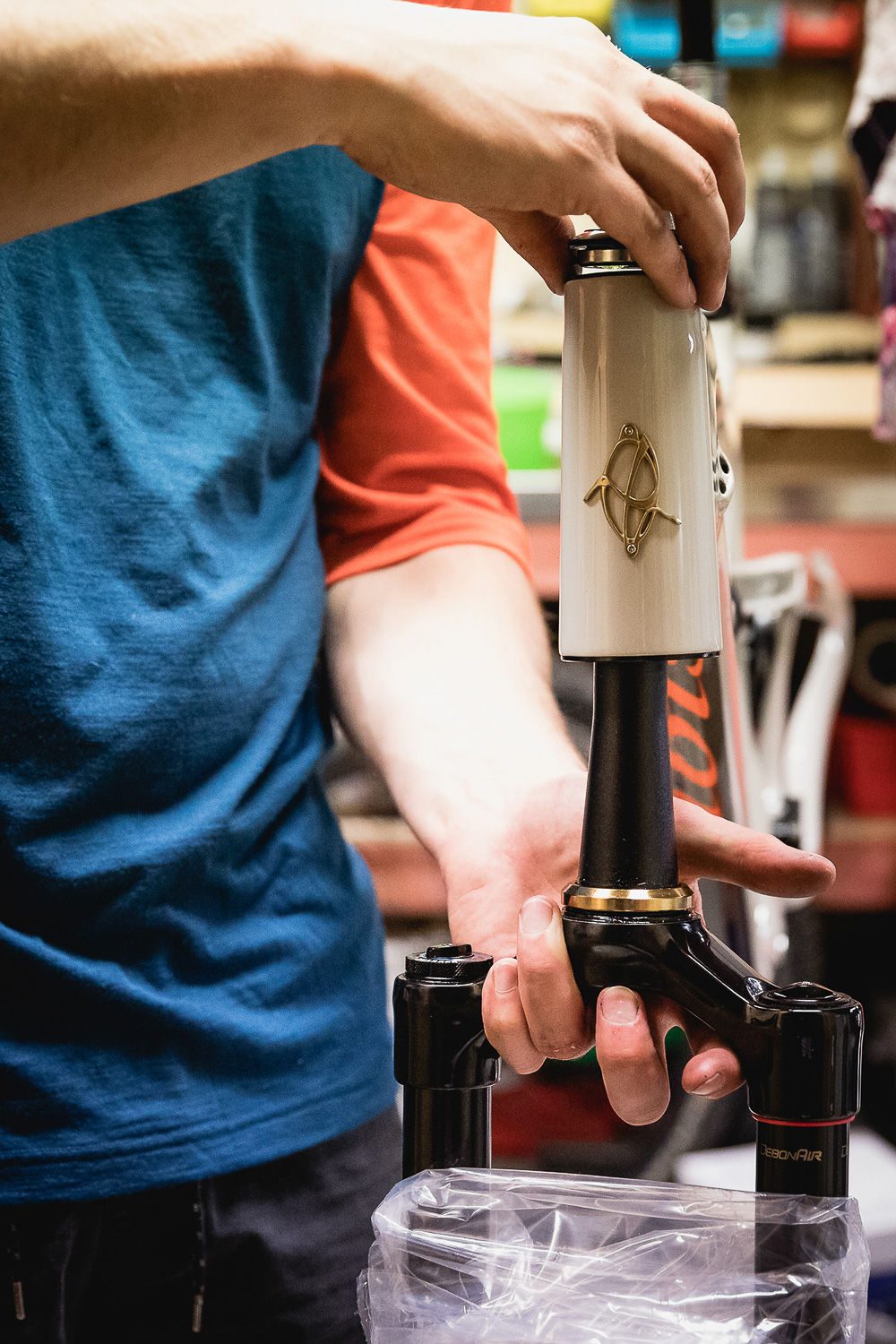
This isn’t the first Ibis I’ve built and it likely won’t be the last - for good reason. The attention to detail on any Ibis frame is second-to-none, and that comes across loud and proud the minute you get a frame or bike in the stand. This translates to an easy, clean build, and this latest creation was no exception.
I almost wish we built this Mojo up with cabled gearing, simply down to the simplicity of cabling the rear derailleur, dropper and brake. All Ibis frames feature internal tubing for the cabling to route through, resulting in rattle-free builds and tool-free assembly; you just route the cable through one end and out it pops at the other.
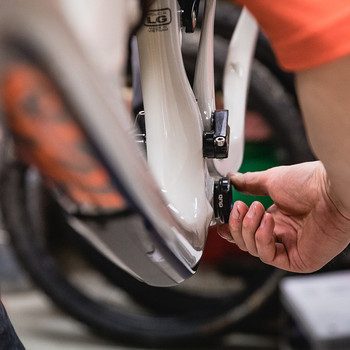
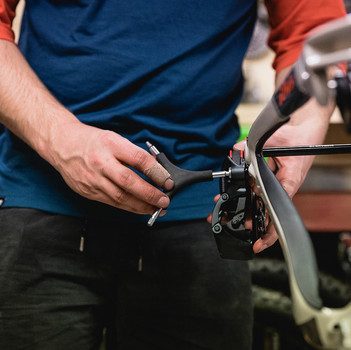
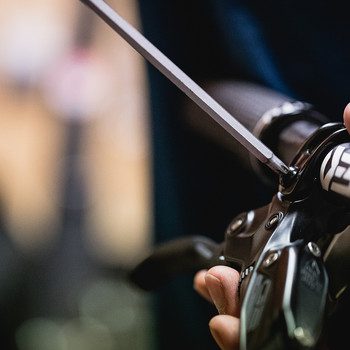
SRAM’s AXS take all the fun out of that process: it’s too easy. I know it sounds like a complaint - it isn’t! - but when a frame is so well crafted, you want to be able to enjoy the experience of assembling it, rather than just attach components via a thread and it be over.
There isn’t any commentary really, other than to say that with good ingredients and good prep, the results yield exactly what you hoped for, without issue.
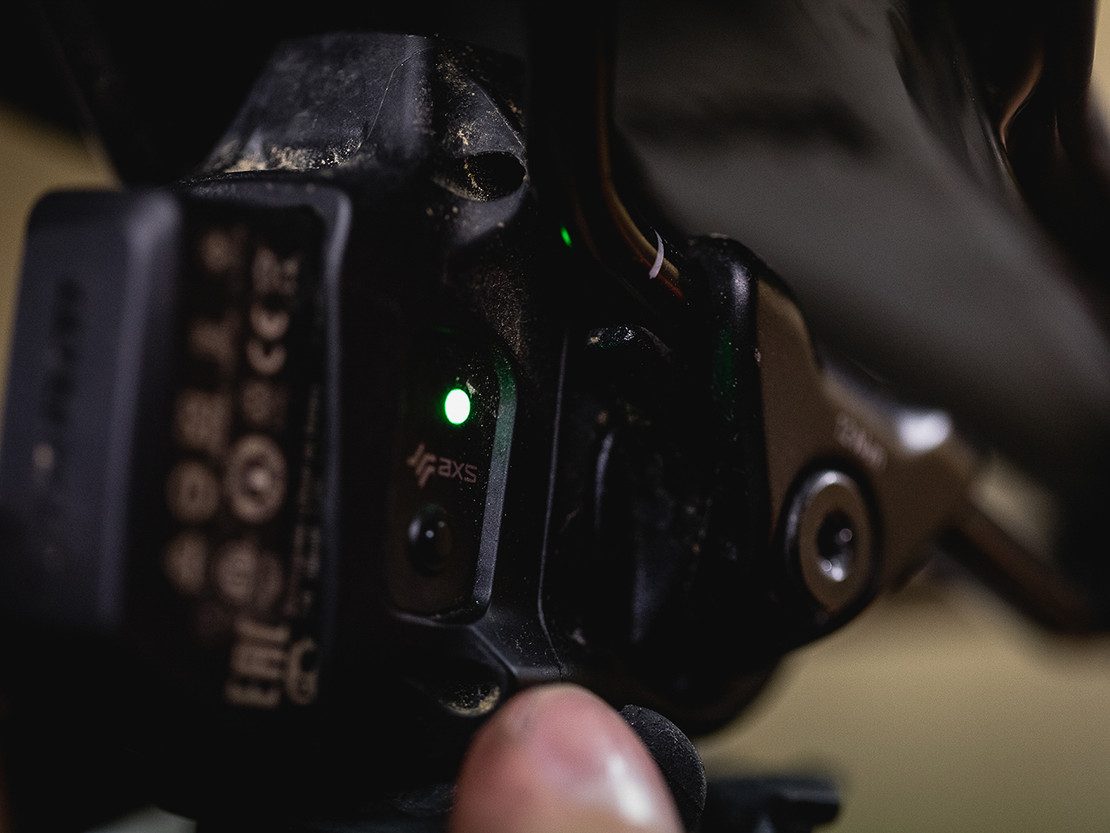
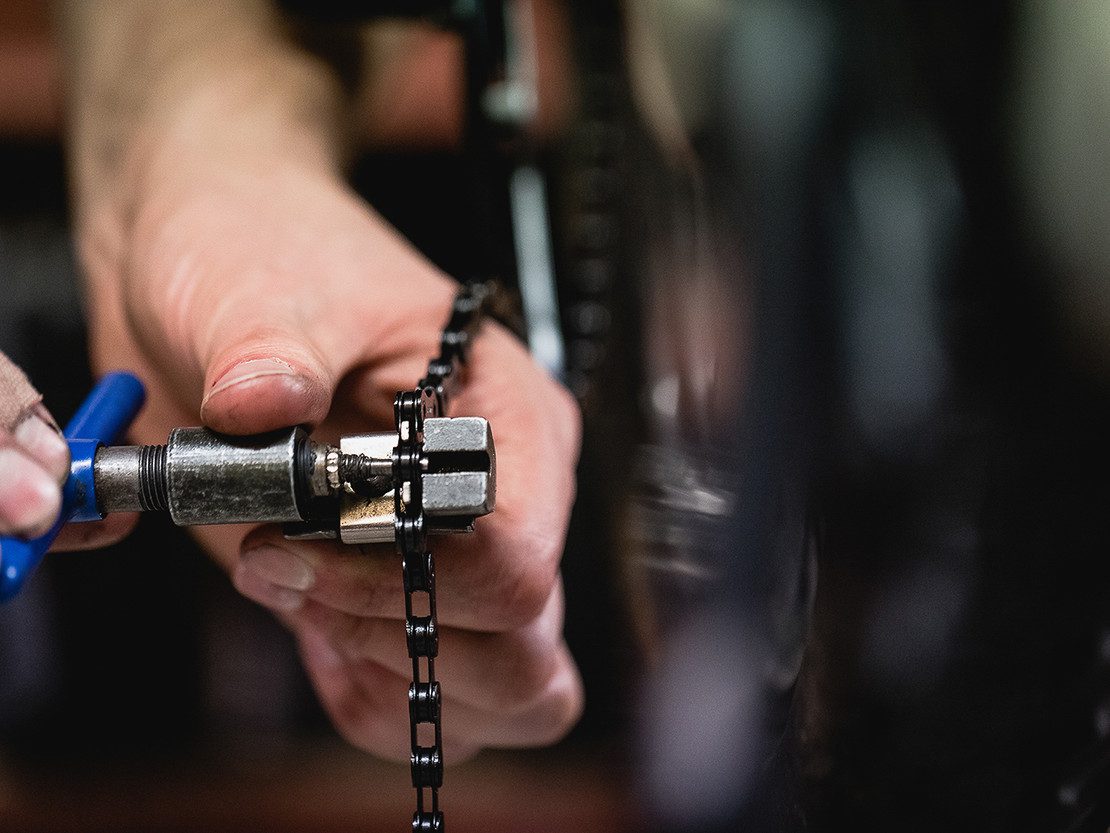

A short travel 27.5” bike with aggressive geometry of this nature seems to be a dying breed, and the mullet build would have helped to increase the lifespan and versatility of the Mojo. It’s not to say that the recommended setup is bad, just that things could be done differently, for better or worse. It was something I’d pushed for, but brand constraints meant we’d need to keep things clean shaven.
I’m sure this won’t be the last time we work with the Mojo. The mullet seed has been sown, so let’s see what comes of that in future issues.
To read the full story, subscribe to NZ Mountain Biker Magazine here.
Words & Images: Cameron Mackenzie
Review: Pirelli Scorpion Tyres
Read Part 1 here.
I was happily surprised with the way the Pirellis handled things. The front end didn’t flinch, the bike heading straight where I pointed it. Any deviation was my fault. By halfway down I was feeling pretty confident, and the biggest root tangle was successfully navigated, delivering me to the small shelf I was hoping to get to, avoiding a slither into the quagmire that is the low-line on the trail. I ducked out of the trail and headed back up the hill, to take a run through the glorious Tuhoto Ariki, three kilometres or so of similar country, with a decent climb in the middle. The climb has a few sections that require your rubber to provide a firm grasp of the planet. Once again, no worries at all. I couldn’t get the rear tyre to let go. Near the end of the ride, I took a detour to an old section of trail that climbs steeply up a 50-metre straight. It would be an eye-watering climb without the tangle of pine tree roots that crisscross the surface. They are at a variety of angles, and feature a variety of height above the dirt - if I am fresh and feeling my oats I can get to the top about eight times out of ten, but that’s when it’s dry. I have to approach it in a series of tacks, slowing almost to a standstill between tricky bits to avoid passing out. How did we go? Very well, thank you. Once again, the front end was sure footed and the rear tyre provided drive with zero slippage.
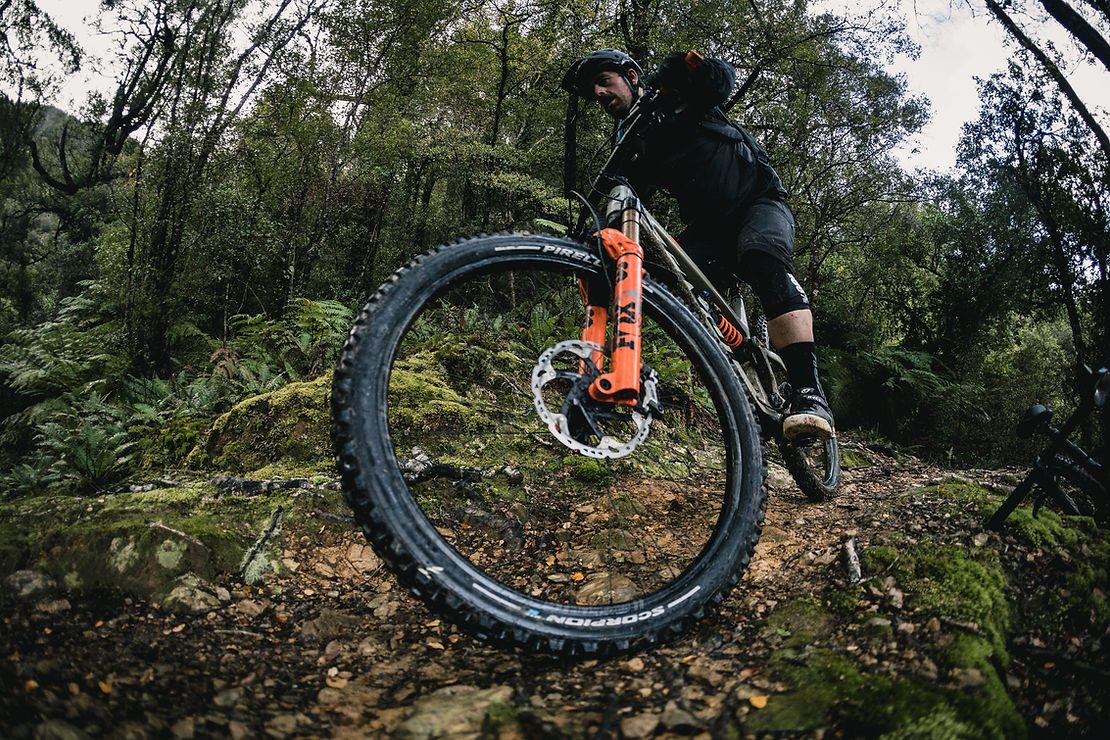
Within 24 hours the trails were gold. Dry trails in a Whakarewarewa winter are about as good as dirt gets. I expected the wide open spacing of the front tread to be a liability but was actually amazed by the grip. I am not the fastest thing in the woods by any stretch, but it is all relative and at my version of warp speed the Pirellis were very impressive. I had dropped the pressure a little more, to around 17psi on the digital gauge, and that is where the tyres really started to shine.
The Trail tyre range has a beefy sidewall reinforcement to prevent the tyres from changing their shape as they are tipped over. The round profile gives a firm grip even when leaning hard, and a turn delivers a pleasant buzz of rubber grappling with the surface.

For the final round of testing, we were lucky enough to be able to evaluate a 27.5 X 2.6 set of Pirellis on a different bike, this time an Ibis Mojo 4, and on foreign country, three days in the Marlborough Sounds. Over the next three days we rode on just about every conceivable surface: the Queen Charlotte Track has loose rock, hardpacked clay (both dry and wet), mud, regular dirt, and grass. The trails to Nydia Bay and beyond featured rock, big lumps of loose rock, smaller lumps of same, the muscular wild cousins of the tame roots we have up north, and all manner of dirt - as well as hefty helping of pine needle carpet for dessert. If you want a long weekend to test tyres, you will struggle to find a better venue.
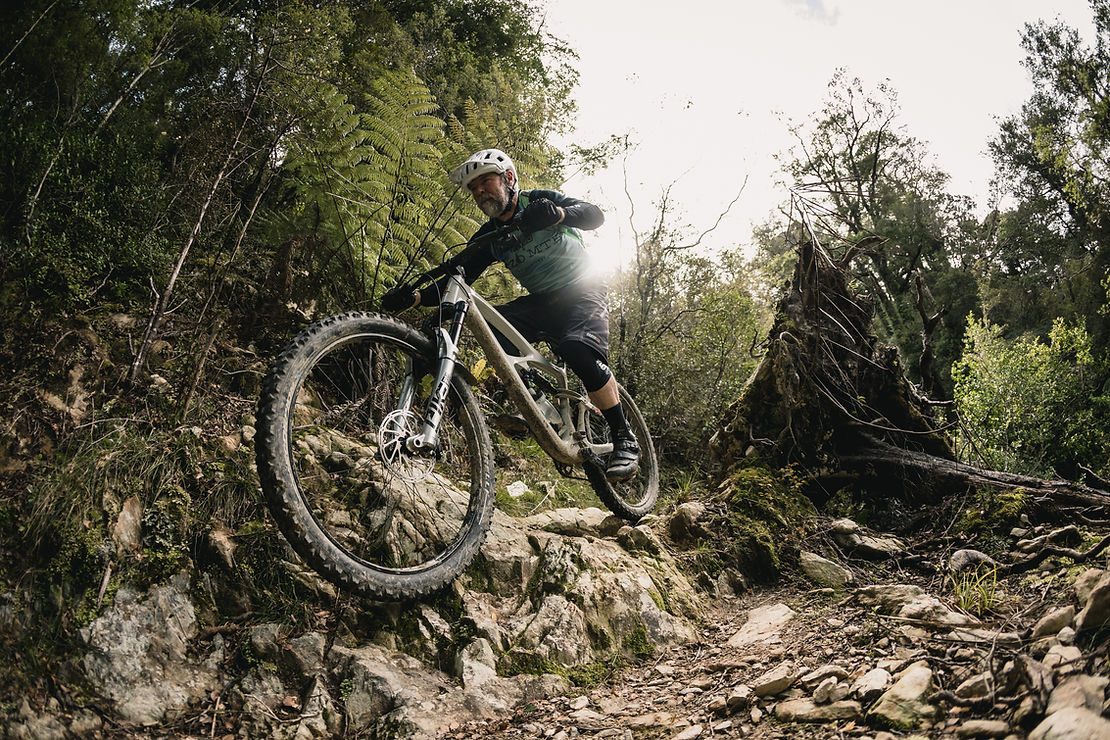
I went directly to a low pressure setting, and pretty much stopped thinking about tyres. Complete confidence was achieved on the first climb (loose, fairly small bits of rock) and subsequent descent (similar, with some hard packed clay and junior roots).
We had mercifully trouble-free rides, I had one crash which had nothing whatsoever to do with the tyres, and no flats on trail that must have claimed some scalps. If you are looking for burly tyres that do their job with minimal fuss, give the Pirelli Scorpions a go.
Pirelli Store Locater is here
Words: Gary Sullivan
Images: Cameron Mackenzie
WIN! With NZ Mountain Biker & earSHOTS

It's not quite summer yet, but we've partnered with our friends at earSHOTS to give you the chance to win some rad prizes over the next few months! From 4th November 2020, you've got the next two-weeks to make an edit of you out shredding your local trails. Upload it to your Instagram, tag us and earSHOTS, and use the hashtag #NZMSummerShredit to go in the draw to win a prize with a retail value of over $200!
How to Enter:
1 - Create a 20-30 second long video of you shredding your local trails. Must be shot and edited on a phone or similar mobile device - no cameras! Find a list of mobile video editing apps here.
2 - Upload your video to your Instagram feed and tag @nzmountainbikermagazine, @ride_earshots and #NZMSummerShredit to enter. Make sure your account isn't private for the duration of the competition, otherwise we won't be able to see your entry!
3 - On the 18th November, we'll select our three favourite videos, and then it will be up to you to vote and decide our winner! Get your friends, family and anyone else you can think of to vote for your video!
Charge up your phone, rope in a buddy, and head out to your local trails to get filming!
Terms & Conditions
The competition is only open to people living in New Zealand. Entrants will be disqualified if found to be using cameras, computers etc to create their videos. One entry per person. NZ Mountain Biker Magazine and/or earSHOTS may share your videos. By entering the competition, you grant permission for this to happen.

